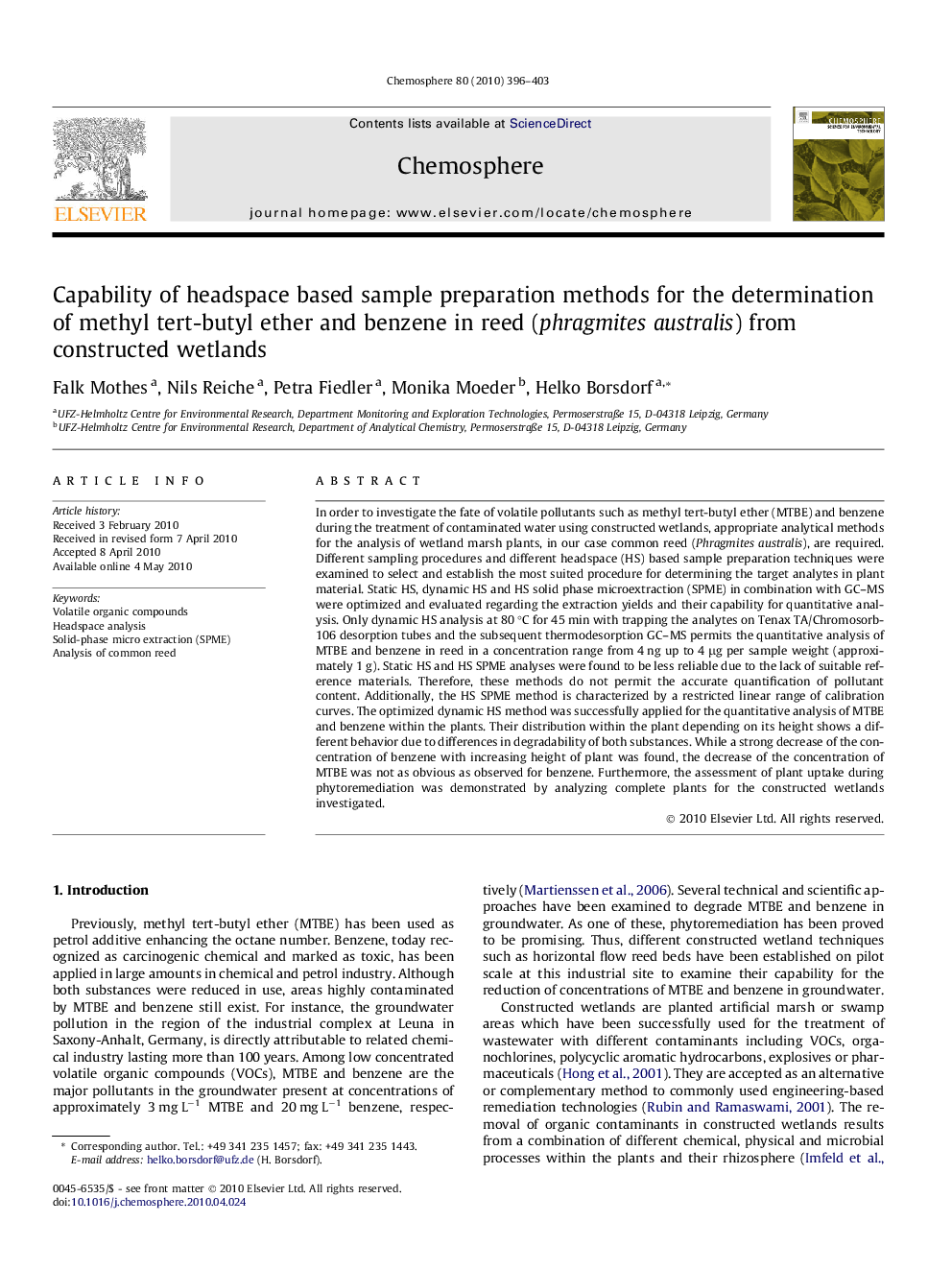| Article ID | Journal | Published Year | Pages | File Type |
|---|---|---|---|---|
| 4412130 | Chemosphere | 2010 | 8 Pages |
In order to investigate the fate of volatile pollutants such as methyl tert-butyl ether (MTBE) and benzene during the treatment of contaminated water using constructed wetlands, appropriate analytical methods for the analysis of wetland marsh plants, in our case common reed (Phragmites australis), are required. Different sampling procedures and different headspace (HS) based sample preparation techniques were examined to select and establish the most suited procedure for determining the target analytes in plant material. Static HS, dynamic HS and HS solid phase microextraction (SPME) in combination with GC–MS were optimized and evaluated regarding the extraction yields and their capability for quantitative analysis. Only dynamic HS analysis at 80 °C for 45 min with trapping the analytes on Tenax TA/Chromosorb-106 desorption tubes and the subsequent thermodesorption GC–MS permits the quantitative analysis of MTBE and benzene in reed in a concentration range from 4 ng up to 4 μg per sample weight (approximately 1 g). Static HS and HS SPME analyses were found to be less reliable due to the lack of suitable reference materials. Therefore, these methods do not permit the accurate quantification of pollutant content. Additionally, the HS SPME method is characterized by a restricted linear range of calibration curves. The optimized dynamic HS method was successfully applied for the quantitative analysis of MTBE and benzene within the plants. Their distribution within the plant depending on its height shows a different behavior due to differences in degradability of both substances. While a strong decrease of the concentration of benzene with increasing height of plant was found, the decrease of the concentration of MTBE was not as obvious as observed for benzene. Furthermore, the assessment of plant uptake during phytoremediation was demonstrated by analyzing complete plants for the constructed wetlands investigated.
